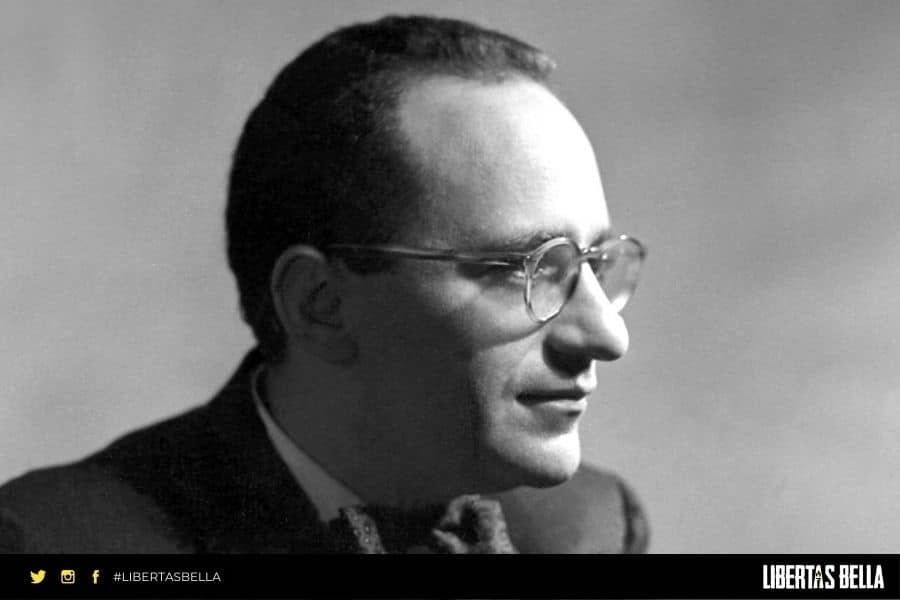Table of Contents
Talking about libertarian politics will likely leave many people confused.
It’s no secret that libertarians have fierce independent streaks, which makes it next to impossible for them to organize in large groups. Large splinter factions abound, all with their own infighting, disagreements, and factionalism.
Just look at the radical anarchist wing of libertarianism. There’s even schisms among anarchist libertarians with regards to ideology and strategy. This is best exemplified by the agorism vs. anarcho capitalism debate in the libertarian movement.
While both ideologies are anarchist in outlook, they differ substantially in strategy and to a lesser degree in terms of overall market analysis, which will be discussed below.
What is Agorism
The theory of agorism was put forward by libertarian philosopher Samuel Edward Konkin III. Konkin was known for his fierce promotion of market anarchism and was part of a new generation of market anarchists who began to challenge the orthodoxies of libertarian thought at the time.
The libertarians who preceded him were largely inspired by limited government classical liberal figures such as F.A. Hayek and Ludwig von Mises. Konkin, on the other hand, was ready to shake things up.
His theory of agorism was a novel way of fighting the state. Under agorism, individuals would abandon the pursuit of traditional politics. Instead, they would attempt to build libertarian institutions to serve as alternatives to the current political economy. To resist the state, many agorists would engage in black and grey market activity.
What set agorism apart from other libertarian sub-sects was its emphasis on proactive work in the market. After all, agorists rejected political participation and put an emphasis on using counter-economics to reduce the state’s influence on society. The agora (the open marketplace) is the ideal that proponents of agorism strive for.
How Agorism Differed From Rothbardian Anarchism
At the time of Konkin’s rise to prominence, libertarianism was being led by Mr. Libertarian himself, Murray Rothbard. Rothbard was the pre-imminent voice for the liberty movement, whose works on history and economics made him a renowned thought leader.
What set Rothbard apart from was his libertarian counterparts was his advocacy for anarcho-capitalism. Rothbard fiercely hated the state and saw it as an entirely illegitimate institution. Even traditionally legitimate functions of government — defense, law enforcement, and the courts — were perceived as illegitimate.
In the ancap view, the market would provide these services, just like any other activity in everyday life. Agorists were in agreement with this outlook. In fact, their decision to participate in counter-economics is motivated by the agorist hatred of the state.
In a similar vein, their antipathy towards the state is what makes them view political activity as a waste of time at best. At worst, political work is an activity that legitimizes the state. Konkin called the concept of using political parties and political processes to advance libertarian agenda items as “the patriarchy.”
This criticism wasn’t solely directed towards Rothbardians. Konkin believed that this was a flaw of limited government libertarians or minarchists (another term he coined). The disciples of Konkin stressed the importance of building the counter-economy of free-market economic institutions and businesses as a pragmatic way to bring change.
These ventures that exist outside of the state’s umbrella of intervention and coercion are viewed as the principal means of bringing about a free society. The champions of agora regard the counter-economy as a means of peaceful direct action. In essence, agorists would avoid state power, while simultaneously building parallel institutions.
Konkin’s Strong Defense of the Agora
The decision to participate in traditional politics is viewed as surrendering to the prevailing statist order. Konkin stressed this point in his debates with Rothbard. Eventually he penned The New Libertarian Manifesto in 1980 to outline his views on agorism.
In his work, Konkin made the case for workers and free market entrepreneurs to band together and build institutions outside the state’s control. Konkin brought forward a new form of class theory to explain how the state derives its power and how libertarians can properly combat it.
Konkin’s class theory is derivative of Marxism, although it has various differences. Instead of framing political conflict between the bourgeoisie vs. the proletarians, Konkin saw the conflict between the state and politically connected businesses vs. free individuals and revolutionary businesses.
The Political Uniqueness of the Agora
Agorists still believed in private property, but their belief in free-market anarchism gave them a unique perspective on political economy. In contrast to mainstream conservatives and some libertarians, agorists did not categorically praise all business activity.
They acknowledged that certain individuals and companies would game the state in order to extract benefits from it at productive people’s expense. This is why many pro-agora figures made it a point to promote activities in the counter-economy and only praised entrepreneurship that operated ethically and created value for others.
Unlike fusionist libertarian factions of the 20th century, which combined forces with traditional conservative figures, Konkin and his disciples saw agorism as an extension of the left-wing tradition. The political philosophy of the agora eschewed many associations with the conservative movement in the United States.
Ultimately, a stateless society would be achieved through voluntary exchanges in the free market instead of political activity. Konkin was a revolutionary through and through. He saw the fatal flaws of limited government minarchism and proposed a more radical alternative involving people getting involved in black and grey markets.
How Konkin’s Philosophy Inspired Others
Many would be led to believe that agorism is an obscure philosophy that only belongs in the dark crevices of the Internet. While it never grew into a mainstream force, the principles of agora have inspired a number of notable individuals during Konkin’s lifetime.The science fiction novelist J. Neil Schulman published Alongside Night in 1979.
In this novel, Schulman expressed agorist principles and even noted himself that he was inspired by Konkin’s work. Alongside Night remains a fixture in the libertarian science fiction space. To this day, the novel remains popular in liberty circles and is often cited as a source of inspiration for modern liberty figures.
For example, Silk Road founder Ross Ulbrich credits the work of Konkin and Schulman for his decision to create an online market on the darknet. Agorists works have inspired subsequent generations of anarchists, most notably crypto-anarchists, to work on non-state solutions to fiat money through the adoption of cryptocurrencies.
After his death in 2004, Konkin became immortalized in libertarian circles. In addition, he has motivated others to join the fight for the agora, which shows that Konkin’s ideas are still highly respected and even being passed onto future generations.
What is Anarcho-Capitalism
Economist Murray Rothbard was the most prolific libertarian writer of the 20th century. Rothbard was renowned for his radicalism and willingness to be the consummate contrarian. The free market thought leader was influenced by the works of the Austrian school of economics and used it as the pillar of his economic thought.
When he wasn’t busy typing away provocative content, Rorhbard worked on building the political philosophy of anarcho-capitalism. Rothbard rejected mainstream conservatism and liberalism and sought a new approach to politics. His Austrian economics foundation led him to pursue a genuinely radical political agenda.
Rothbard’s anarcho-capitalist philosophy advocated for the abolition of state. It’s the ultimate expression of anti-statism, which called for a system of private property to replace the state. Free market institutions and civil society would be tasked with replacing traditional competencies that were within the state’s grasp.
At the core of anarcho capitalist thought, is an emphasis on self-ownership and the non-aggression principle. Under the latter, individuals are free to go about their lives provided that they do not violate other people’s rights. That means people’s persons or property would be secured from external aggression.
This logic doesn’t just apply to interactions between individuals but also between society and the state. The fact that the state is financed by taxation — a coercive practice — demonstrates the illegitimacy of the state in the anarcho capitalist view. In sum, all forms of aggression — private and public — would be categorically rejected.
Other Arguments in Favor of Capitalist anarchy
Indeed, there were utilitarian arguments for a stateless society based on free-market principles. Several figures such as David Friedman, the son of Milton Friedman, did not view the state as evil per se. Rather, they focused on the inefficiency of the state to prove that a radical market alternative is needed to provide higher quality services.
Such a perspective differed from the minarchism that figures from Ludwig von Mises to Ayn Rand espoused. Minarchists still believed in some form of government for defense, judicial matters, and law enforcement. Ancaps believed that the state’s involvement in those areas was completely unnecessary and at times immoral.
From defense to policing, ancaps firmly believed that the market could provide such services in a more efficient and just matter. Many anarchists saw markets as more efficient than the state because market actors respond to profit-and-loss mechanisms. Consumers ultimately decide with their dollars which goods and services they desire.
Functionally, anarcho-capitalists and agorists were similar in how they aimed for a stateless society predicated on anarchist principles. They both despised the state as a coercive institution. However, agorists do not treat all capitalists equally.
Their class theory, as mentioned before, makes a distinction between productive entrepreneurship and rent-seeking capitalism. Anarcho-capitalists will sometimes defend a number of well-established corporations on the grounds that they provide services that consumers demand.
Strategic Differences Among Anarchists
The more important difference between agorists and certain ancaps such as Rothbard would lie in their strategy. As mentioned before, Rothbard was a political pragmatist. He did not shy away from getting involved in politics and used the process to build transpartisan alliances.
The libertarian leader made alliances with everyone — from the New Left during the Vietnam War to the paleoconservative movement in the 1990s. Rothbard was genuinely fascinated with politics and saw it as a way for ancaps to make gradual progress.
He did not see the use of counter-economics as a viable way to reduce the state’s influence. Rothbard reasoned that the state would clamp down on said activities and render them ineffective in reducing the state’s influence. He cited how black markets have existed since time immemorial and have not reduced the size of the state.
Rothbard did not blindly trust the political system however. He only focused on building single issue coalitions with political figures he agreed with and sought to undermine statist policy on a gradual basis. Ultimately, Rothbard was a keen strategist that picked his battles carefully.
For example, Rothbad was heavily involved with the Libertarian Party in his early activist days, but ended up leaving for ideological and strategic reasons. Running a successful third party in America is a virtual impossibility, thus requiring activism within the two-party system. Rothbard acknowledged this and proceeded accordingly.
Other ancaps who succeeded Rothbard were not as keen on political activity but they did not necessarily view such activity as immoral. Nevertheless, the proponents of Rothbardian anarchism have remained dedicated towards their promotion of free markets and disdain for the state.
Final Thoughts On Agorism vs. Anarcho Capitalism
While similar in their desire for a stateless society, agorism and anarcho-capitalism do have key differences in how they will arrive at that destination.
The former stresses black market activity while the latter is willing to entertain traditional political activism. However, it would be a mistake to believe that these are two conflicting ideologies.
Thanks to the advent of cryptocurrencies such as Bitcoin, these two philosophies have converged around a technology that is viewed as a force for liberation from fiat money. The agorism vs. anarcho capitalism discussion is really a matter of different strategies used to lead towards a stateless society.
With the creation of the Internet and the growth of features such as cryptocurrencies, we are perhaps on the cusp of a Golden Age for practical anarchism. Both of the aforementioned schools of thought can be credited for creating the conditions for such a climate of innovation.
The 21st century could wind up being the epoch when anarchist ideas finally become relevant in political discourse thanks to the power of the Internet and the free-market entrepreneurship it fosters.




